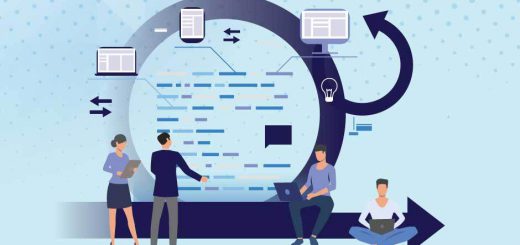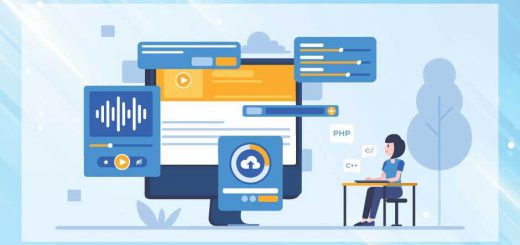The Importance of User-Centered Design in Software Development: Putting Users First
When it comes to software development, there is a crucial element that can often be overlooked – the user. In today’s fast-paced digital world, it is more important than ever to prioritize the needs and preferences of the end user. This is where user-centered design comes into play.
By putting users first, we can create software that not only meets their needs, but also delights and engages them. In this blog post, we will explore the importance of user-centered design in software development and how it can lead to enhanced user experiences and increased overall satisfaction. So, let’s dive in and discover why putting users at the center of the design process is a game-changer.
Understanding User-Centered Design
User-centered design (UCD) is an approach to designing products, systems, and services that focuses on the needs, wants, and limitations of the end users. It involves understanding the users’ perspectives, goals, and behaviors, and using that knowledge to inform the design process. By putting the user at the center of the design, UCD aims to create intuitive, efficient, and enjoyable experiences.
1. User Involvement: Users are actively involved in the design process, from the initial stages of research and ideation to the evaluation of prototypes. Their input and feedback are considered essential for creating user-friendly designs.
2. Research and Analysis: User-centered design involves conducting thorough research to understand the target audience. This includes gathering information about their preferences, behaviors, and pain points. By analyzing this data, designers can make informed decisions based on the needs of the users.
3. Iterative Design: User-centered design is an iterative process, where designs are refined and improved based on user feedback. This allows for continuous improvement and ensures that the final product meets the users’ expectations.
4. Usability Testing: Usability testing is a crucial part of user-centered design. By observing users interacting with prototypes or finished products, designers can identify usability issues and make necessary adjustments. This helps in creating designs that are intuitive and easy to use.
Benefits of User Centered Design
Adopting a user-centered design approach offers several benefits for both businesses and users. Let’s explore some of the advantages:
1. Enhanced User Satisfaction: By focusing on the needs and preferences of the users, user-centered design aims to create products that meet their expectations. This leads to higher user satisfaction and increased loyalty towards the brand.
2. Improved Usability: User-centered design places a strong emphasis on usability. By involving users in the design process and conducting usability testing, designers can identify and address usability issues early on. This results in products that are easier to learn, navigate, and use.
3. Increased Efficiency: User-centered design aims to streamline processes and make interactions more efficient. By understanding how users perform tasks and identifying pain points, designers can optimize workflows and create designs that save time and effort.
4. Reduced Development Costs: By involving users throughout the design process, user-centered design helps in minimizing the risk of developing products that do not meet user needs. This reduces the chances of costly redesigns and rework, saving both time and money.
5. Competitive Advantage: In today’s competitive market, user experience plays a crucial role in differentiating brands. By adopting a user-centered design approach, businesses can create products that stand out from the competition and attract more users.
Implementing User-Centered Design in Software Development
By involving users throughout the development process, UCD ensures that software is intuitive, user-friendly, and ultimately successful.
Step 1: Define the Target Audience
The first step in implementing UCD is to clearly define the target audience for your software. Who are the end-users? What are their goals, needs, and preferences? Conducting user research, surveys, and interviews can help gather valuable insights about your target audience.
Step 2: Conduct User Research
User research plays a vital role in understanding the needs and expectations of your target audience. This step involves gathering data through various methods, such as observing users in their natural environment, conducting usability tests, and analyzing user feedback. The insights gained from user research will inform the design and development process.
Step 3: Create User Personas
Based on the data collected during user research, create user personas. User personas are fictional representations of your target audience, which help you understand their characteristics, goals, and behaviors. These personas serve as a reference point throughout the development process, ensuring that the software meets the needs of different user types.
Step 4: Define User Requirements
Once you have a clear understanding of your target audience and their personas, it’s time to define the user requirements. User requirements outline the functionalities, features, and interactions that the software should offer to meet the needs of the users. Collaborate with stakeholders, designers, and developers to define these requirements and prioritize them based on user needs.
Step 5: Ideation and Conceptualization
In this step, brainstorm and generate ideas for the software’s design and functionality. Encourage creativity and collaboration among the team members to come up with innovative solutions. Use techniques such as sketching, wireframing, and prototyping to visualize and refine the concepts.
Final Thoughts
User-centered design is a crucial aspect of software development that prioritizes the needs and preferences of users. By putting users first, developers can create products that are intuitive, efficient, and enjoyable to use. This approach not only enhances user satisfaction but also leads to increased adoption and success of software applications.
By incorporating user feedback and conducting thorough usability testing, developers can identify and address potential issues early on, resulting in a better overall user experience. Ultimately, user-centered design is key to creating software that truly meets the needs of its intended audience and contributes to the success of any software development project.



